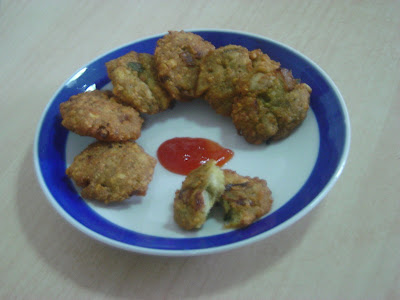Velagapandu Pachchadi in Telugu
The wood-apple, it may be called elephant apple, monkey fruit, curd fruit, kath bel and other dialectal names in India. It is a favorite fruit to elephants as well as to Lord Vinayaka and has medicinal value. The fruit is round to oval, with a hard, woody, grayish-white, scurfy rind. The pulp is brown, mealy, odorous, resinous, astringent, acid or sweetish, with numerous small, white seeds scattered through it. The rind must be cracked with a hammer. The scooped-out pulp, though sticky, is eaten raw with or without sugar, or is blended with coconut milk and palm-sugar syrup and drunk as a beverage, or frozen as an ice cream. It is also used in chutneys and for making jelly and jam. The jelly is purple and much like that made from black currants. There are 2 forms, one with large, sweetish fruits; one with small, acid fruits. For more details, visit the following site:
http://www.hort.purdue.edu/newcrop/morton/wood-apple.html


Ingredients:Wood apple-1
Green chillies-5
Grated jaggery-1 tablespoon
Cumin seeds-1 teaspoon
Salt-1 tablespoon
Turmeric powder- a pinch
Curry leaves-few
Oil for seasoning-1 teaspoon
Seasoning ingredients-1 teaspoon (urad dal, mustard seeds, cumin seeds, channa dal, fenugreek seeds and dry red chilli pieces).
Method:1. Wash and break the wood apple using a hammer and takeout the pulp.
2. Grind the pulp along with jaggery, cumin seeds, turmeric powder, salt and green chillies into thick paste.
3. Keep a pan on the stove and heat the oil and add the curry leaves and seasoning ingredients.
4. Add the paste to the seasoning and let it cook for two minutes on low flame.
5. Serve with hot rice and ghee.
Note: Wood apple has its own unique taste (e.g. bitter guard) and not everyone might like it.













 Undrallu-healthy and easy to digest.
Undrallu-healthy and easy to digest.  This is my entry for Festival Event - Ganesh Chaturthi hosted by Latha Narasimahan of The 'yum' blog.
This is my entry for Festival Event - Ganesh Chaturthi hosted by Latha Narasimahan of The 'yum' blog.









